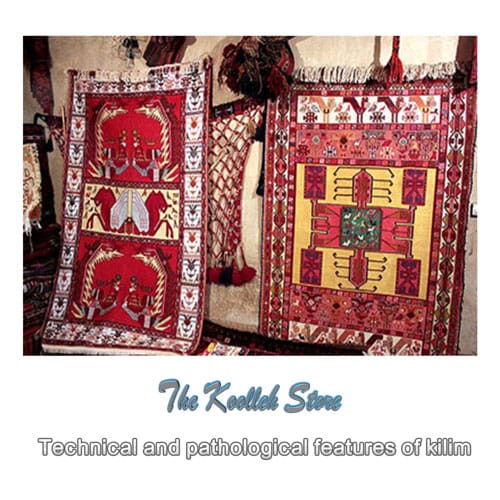Technical and pathological features of kilim

Technical characteristics of kilim:
Fiber material: The fibers used in kilims must be made of 100% pure, new, washed wool or wool that has been properly removed from the skin.
Fiber diameter: The fiber diameter should be from 20 to 50 microns.
Percentage of fat: The maximum fat in creams (after coiling) should not be more than 1.5 percent.
Anti-willow: Rugs should be anti-willow with special chemicals and this action should be mentioned on the back of the rugs by a label.
Water color stability: Hand-woven kilims will be accepted according to this standard when their color stability against water is not less than the following figures:
A- The degree of color change of the main sample should be at least 4.
B- The degree of staining on cotton and wool fabric should be on the standard.
Color stability against washing or soap: Hand-woven kilims will be accepted according to this standard when their color stability against washing with soap is not less than the following figures:
A- The degree of staining on woolen cloth should be at least (4-3).
B. The degree of discoloration of the original specimen and the degree of staining on the woolen cloth shall be on the standard.
Color stability against light: Hand-woven kilims will be accepted according to this standard if their color stability against light is at least 4.
Color stability against wet rubbing and dry abrasion: Hand-woven kilims will be accepted according to this standard if their color stability against wet rubbing and dry abrasion is at least 4.
Example of kilim cream: The cream pattern of hand-woven kilims based on one layer in the texting system should be from 200 to 340, the meter system is one to 3 to 5 meters. It can be S or Z.
Fiber length: The average length of fibers should not be less than 7 cm.
Cream swing: Cream should have at least 20 swings per centimeter.
1) Live traumatic factors:
Humans: Humans can be effective in various ways to damage various types of tissues by hand. On the other hand, the correct transportation and packaging of kilims during relocation can extend the life of the kilim.
Types of fungi, molds and other microscopic organisms:
Humidity is the most important factor in the growth of microscopic organisms, especially fungi and molds. Wool, cotton and silk are all vulnerable to prolonged moisture.
Insects: Among the insects that damage kilims, willow can be considered the most dangerous. The best way to get rid of willow is to clean it.
2) Non-living harmful factors:
Climate: One of the most important factors that can damage objects directly and indirectly, or provide the conditions for other factors to damage and destroy objects.
Light: Long-term exposure to sunlight and even traditional fluorescent lamps can cause paleness, dryness, and brittleness of cellulose materials such as cotton. Intense light may be as harmful in the short term as soft light in the long term. Wet cotton, wool, and silk change light and light faster than dry.
Air Pollutants: In urban areas, there is sulfur dioxide produced by motor vehicles and industrial workshops. Sulfur dioxide, iron particles, sulfur particles and various types of sulfur are among the air pollutants around us, including sulfur. The most harmful pollutants in the air are kilims. These substances combine with the water vapor in the air and are converted to sulfuric acid, which weakens the fibers.

